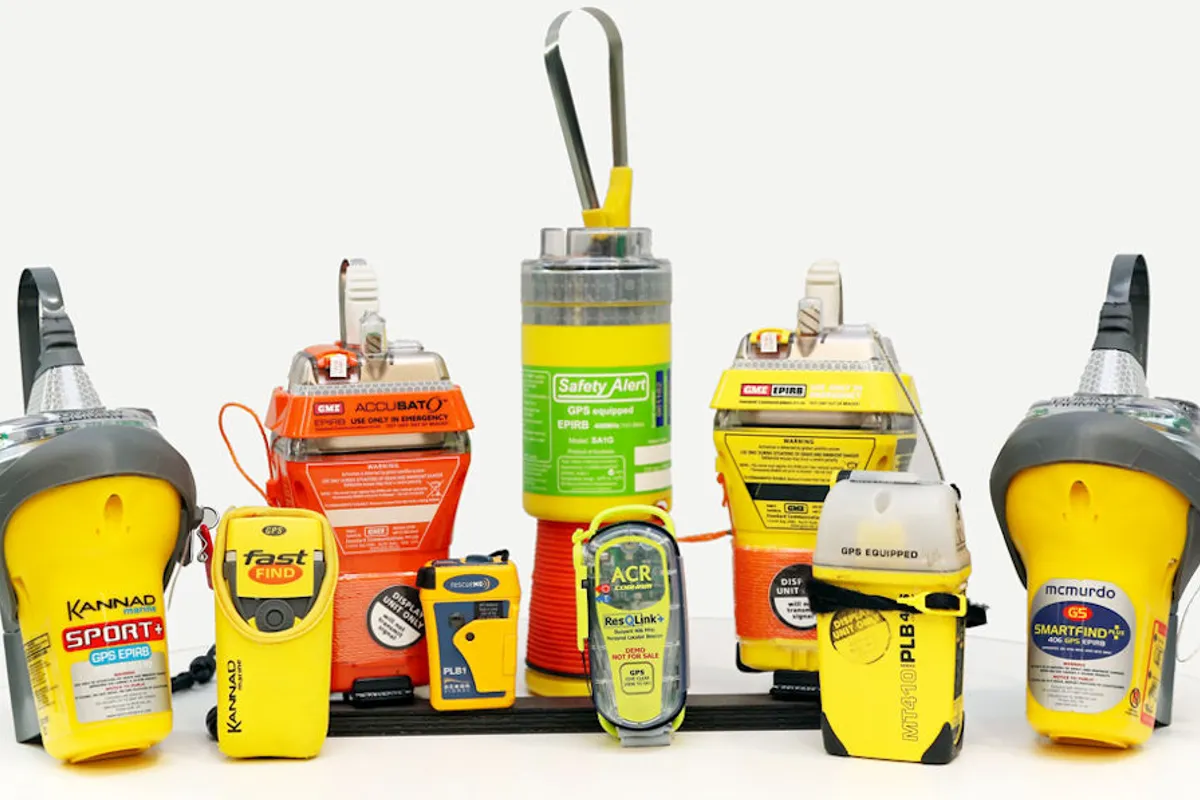Dave Proctor
In this article, I will examine some of the safety telecommunication systems and requirements which will be available to the skippers of the 2023/2024 Global Solo Challenge (GSC).
Before the mid-nineteenth century, the only realistic way one vessel could talk to another vessel or shore station was by the use of signalling flags or by semaphore (again using flags). This was of course by a line of sight only.
In 1844, Samuel Morse invented the Morse code, using a pattern of dots and dashes to denote the letters of the alphabet. This enabled vessels to use signalling lanterns at night or mirrors, reflecting the sun in daylight, to speak to each other.
Also, at about the same time the first pyrotechnic maritime flares were introduced, which assisted rescuers to locate any vessel in distress.
Over the years, Morse code remained the main means of signalling, though the use of lights tended to be replaced with morse code over the radio.
Amazingly even though morse radio signals were around earlier, it was 1912 before a standardised international emergency frequency of 500mhz was adopted. Before this ships would only use their own company’s frequency. This change came about after the sinking of the RMS Titanic.
Indeed up until 1988, the distress maritime system relied on Morse code on 500kHz (MF) and voice radiotelephony on Channel 16 (VHF) and 2182kHz (MF). However, it should be noted that for long-distance communications (HF) the dots and dashes of morse survived interference and radio static much better than the human voice.
In the modern era, maritime communication systems have developed (e.g. automated electronic messaging systems and satellite telephony), as have the available infrastructure (e.g. geostationary satellites for Global positioning).
In 1988, the Global Maritime Distress and Safety System (GMDSS) was introduced by the International Maritime Organisation (IMO) under the wing of the Safety of life at sea (SOLAS) convention.
These rules carry the weight of an international treaty.
To assist me in fully understanding these obligations, I spoke to a former Royal Navy communications expert and latterly an Instructor and Examiner of the GMDSS syllabus – Ian Stairs.
The GMDSS as the full name implies is an internationally recognised distress and radio communications safety system for vessels and dictates a Universally agreed-upon set of safety procedures, it details the type of equipment and the communication protocols to be used. The system should make it easier to alert the relevant agencies and other seafarers in the case of an emergency and should also enable potential rescuers to locate and rescue all vessels, aircraft and/or persons.
The rules state that all ocean-going passenger vessels and cargo vessels of 300 gross tonnage and upwards are required to carry radio equipment that conforms to these international standards and have qualified personnel on board at all times.
The types and standards of the equipment are dictated by the sea area in which the vessel is anticipated to go into, categorised by what form of communication would be necessary for that particular area (e.g. relatively close to shore then the system could rely on VHF radio, whilst in the middle of an ocean a satellite-based system or High-Frequency radio (HF) would be required).
Under the rules of the GSC, a GMDSS Standard C satellite (SAT-C) terminal is not required though it is highly recommended. SAT-C also transmits Maritime Safety Information (MSI) and DISTRESS traffic for the area(s) that you are travelling and/or have programmed. It is essential, however, that the system should be recognised and understood by the skippers as it incorporates many of the obligatory safety aspects into its remit.
A GMDSS incorporates several obligatory features, which are also required under GSC rules:
Digital Selective Calling (DSC) is a standard for sending pre-defined digital messages on VHF MF & HF radios. On most modern vessels radios, there is a DSC button to send an automatic ‘Mayday’ DISTRESS Alert, which will incorporate the vessel’s position.
EPIRBS are Emergency Position Indicator Radio Beacons and are essentially locator devices. Depending on the type, these can be triggered manually or automatically in certain circumstances, e.g. when submerged under water.
As for global mobile satellite communication systems, the latest devices provide two-way data and messaging.
It should be noted that there are three satellite services currently available, Inmarsat, Iridium and Globalstar. The consensus is that Iridium offers the most comprehensive worldwide service with 66 satellites in orbit and is the recommended system for the GSC.
NAVTEX is an automated service for the delivery of navigational and meteorological warnings, forecasts and urgent MSI to vessels. NAVTEX also forwards DISTRESS traffic for the programmed areas that your vessel is in. The messages are specific to particular seas/areas, as appropriate.
In addition to the above, the rules of the GSC sets out precisely what equipment, like radios, handheld (portable) radios etc are required to be carried on board, their accessibility and also that the yacht has a specified radar system and an AIS transponder.
The Automatic Identification System (AIS) provides information on the identity of any vessel, its location, speed and direction of travel. Again The International Maritime Organisation’s International Convention for the Safety of Life at Sea requires AIS to be fitted aboard international voyaging vessels with 300 or more gross tonnage and all passenger vessels regardless of size.
One last point that Ian did make is though the GMDSS is a Maritime designated system, its use and protocols can be equally applied to many search and rescue operations (e.g. In jungles, in Polar exploration, in mountain rescues etc.)
